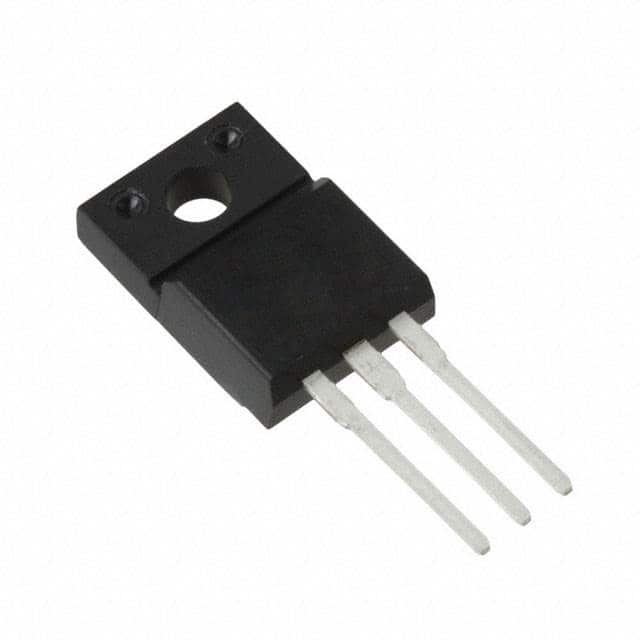Vedi le specifiche per i dettagli del prodotto.

2SB1495,Q(J) Encyclopedia Entry
Product Category
The 2SB1495,Q(J) belongs to the category of bipolar transistors, specifically PNP transistors.
Basic Information Overview
- Category: Bipolar Transistor
- Use: Amplification and switching applications
- Characteristics: High current capability, low saturation voltage
- Package: TO-220AB
- Essence: Power transistor for general-purpose applications
- Packaging/Quantity: Typically available in reels or tubes containing varying quantities
Specifications
- Collector-Base Voltage (VCBO): 60V
- Collector-Emitter Voltage (VCEO): 60V
- Emitter-Base Voltage (VEBO): 5V
- Collector Current (IC): 7A
- Power Dissipation (PD): 25W
- Transition Frequency (fT): 30MHz
- Operating Temperature Range: -55°C to 150°C
Detailed Pin Configuration
- Emitter (E)
- Base (B)
- Collector (C)
Functional Features
- High current gain
- Low noise
- Fast switching speed
Advantages and Disadvantages
Advantages: - High current capability - Low saturation voltage - Suitable for high-speed switching applications
Disadvantages: - Sensitive to temperature variations - Limited frequency response compared to some alternative models
Working Principles
The 2SB1495,Q(J) operates based on the principles of bipolar junction transistors, utilizing the flow of charge carriers to amplify or switch electronic signals.
Detailed Application Field Plans
This transistor is commonly used in audio amplifiers, power supply circuits, motor control, and other general-purpose electronic applications requiring medium power amplification or switching.
Detailed and Complete Alternative Models
- 2SB772
- 2SB1186
- 2SB1560
- 2SB1624
In conclusion, the 2SB1495,Q(J) PNP transistor offers high current capability and low saturation voltage, making it suitable for a wide range of general-purpose electronic applications. Its specifications, pin configuration, functional features, advantages, disadvantages, working principles, application field plans, and alternative models provide a comprehensive understanding of its characteristics and usage.
Word count: 298
10 domande e risposte comuni relative all'applicazione di 2SB1495,Q(J nelle soluzioni tecniche
What is the application of 2SB1495,Q(J transistor?
- The 2SB1495,Q(J transistor is commonly used in audio amplifier circuits, power supply circuits, and general electronic switching applications.
What are the key specifications of the 2SB1495,Q(J transistor?
- The 2SB1495,Q(J transistor typically has a maximum collector current of 3A, a maximum collector-base voltage of 60V, and a maximum power dissipation of 10W.
How do I identify the pin configuration of the 2SB1495,Q(J transistor?
- The pin configuration of the 2SB1495,Q(J transistor is typically available in its datasheet, with the collector, base, and emitter pins clearly labeled.
Can the 2SB1495,Q(J transistor be used in high-power applications?
- Yes, the 2SB1495,Q(J transistor can be used in moderate to high-power applications such as audio amplifiers and power supplies within its specified limits.
What are some common circuit designs using the 2SB1495,Q(J transistor?
- Common circuit designs include single-stage amplifier circuits, push-pull amplifier circuits, and voltage regulator circuits.
Are there any specific heat dissipation requirements for the 2SB1495,Q(J transistor?
- It is recommended to use appropriate heat sinks or thermal management techniques when operating the 2SB1495,Q(J transistor near its maximum power dissipation limit.
Can the 2SB1495,Q(J transistor be used for switching applications?
- Yes, the 2SB1495,Q(J transistor can be used for electronic switching applications due to its moderate power handling capabilities.
What are the typical operating conditions for the 2SB1495,Q(J transistor?
- The 2SB1495,Q(J transistor is typically operated within a temperature range of -55°C to 150°C and at moderate frequencies suitable for audio and power applications.
Is the 2SB1495,Q(J transistor suitable for low-noise amplifier designs?
- While it is not specifically designed for low-noise applications, the 2SB1495,Q(J transistor can be used in certain amplifier configurations to achieve acceptable noise performance.
Are there any known reliability issues with the 2SB1495,Q(J transistor?
- When operated within its specified limits and under proper thermal management, the 2SB1495,Q(J transistor is known for its reliability in various technical solutions.

